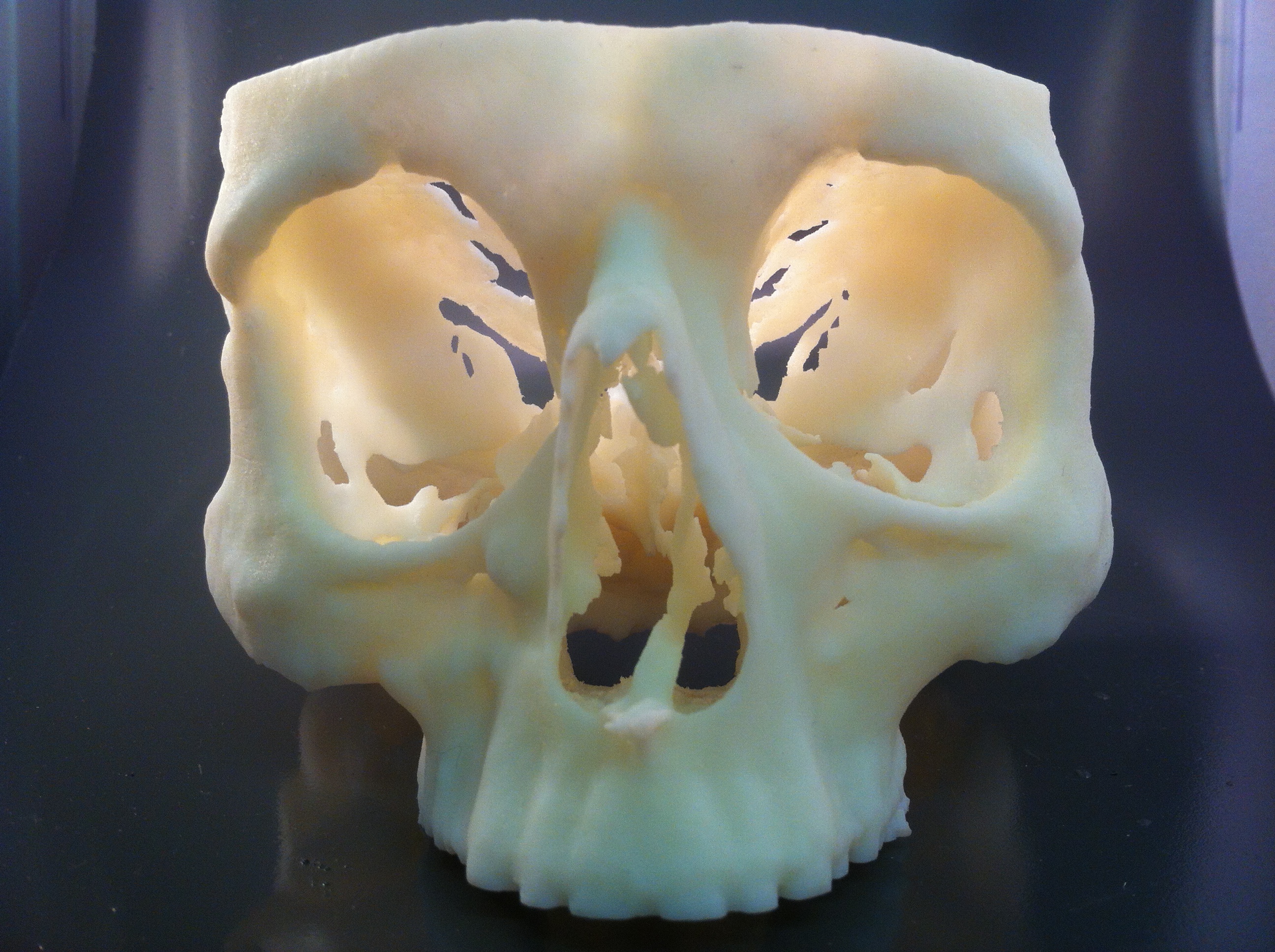
This skull was built on a Stratasys Objet 30 Pro, and was used to validate patient surgery prior to operation. Courtesy of Stratasys.
Latest News
September 1, 2014
This is only guesswork, but it seems likely the first person to try to sell additive manufacturing (AM) to a medical expert would have had a pretty easy time. It doesn’t take much imagination to think of a number of potential applications for medical AM, even if you don’t include the obvious, such as prosthetics or implants.
Replica 3DM must have made a similar pitch recently, because the service bureau has expanded its operations in the UK to cover 12 hospitals. The company was first opened in 2012 to bring medical 3D printing services to National Health Service (NHS) Trust hospitals. The goal was to prove 3D printing could help reduce medical expenses, even while paying for the service.
 This skull was built on a Stratasys Objet 30 Pro, and was used to validate patient surgery prior to operation. Courtesy of Stratasys.
This skull was built on a Stratasys Objet 30 Pro, and was used to validate patient surgery prior to operation. Courtesy of Stratasys.Most small businesses specialize in one area, and Replica 3DM is no different. The company uses Stratasys Objet24 and Objet30 Pro AM systems to convert patient CT scans into physical models for use as surgical guides. The models can also be used to test implants for size, and ensure a proper fit before entering surgery.
“To us, 3D printing and the medical profession go hand-in-hand, particularly in the planning of complicated procedures,” said Matthew Sherry, managing director and founder of Replica 3DM. “A 3D model equips surgeons with a hands-on perspective which cannot be achieved by looking at a computer screen. They can easily rotate, inspect and analyze each surgical procedure on a case-by-case basis, enabling them to pre-bend implants knowing that they will perfectly fit the patient. This is instrumental in eliminating potential problems during operations and can be used as a visual aid when explaining the surgical procedure to patients.”
One particular area in which Replica 3DM has been of assistance to doctors is in the proper fitting of titanium implants. Generally, implants are bent to match the features of the patient before surgery using the doctor’s best guess at fit.
“In the past, surgeons would depend on surgical experience to fit the plates during surgery. This could not only be quite costly, it may also crucially require longer patient anesthesia times,” added Sherry. “As demonstrated in a recent maxillofacial procedure at Salisbury District Hospital, the ability to pre-bend the titanium plate prior to surgery enabled surgeons to secure the perfect custom fit. This reduced the number of incisions required and overall theater time, directly impacting the quality of patient care.”
It probably won’t be long before pre-bending of titanium implants takes a back seat to 3D printed titanium implants that have been modeled specifically for each patient. Regardless, use of medical models helps doctors save both money and lives. Below you’ll find a video demonstrating the effectiveness of a surgical medical model.
Source: Stratasys
Subscribe to our FREE magazine, FREE email newsletters or both!
Latest News
About the Author
John NewmanJohn Newman is a Digital Engineering contributor who focuses on 3D printing. Contact him via [email protected] and read his posts on Rapid Ready Technology.
Follow DE





